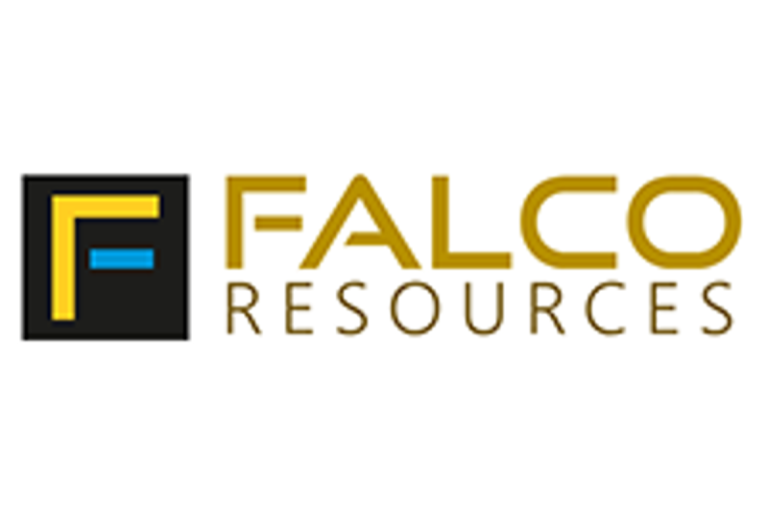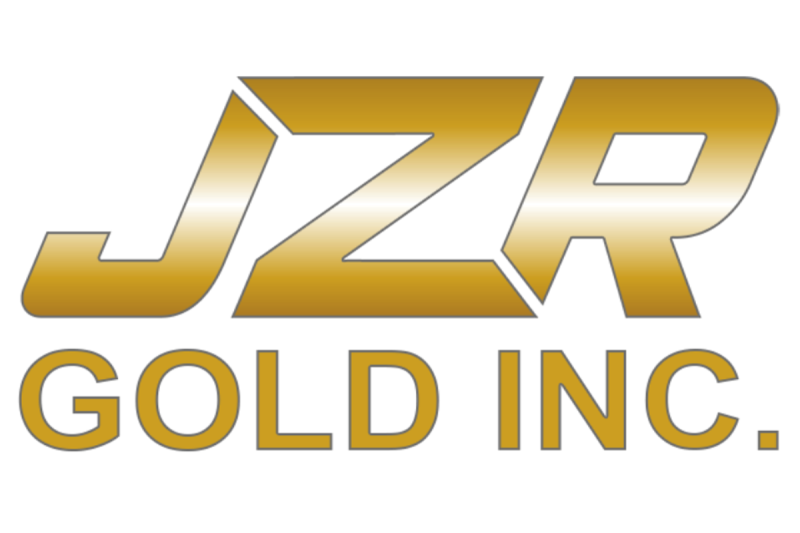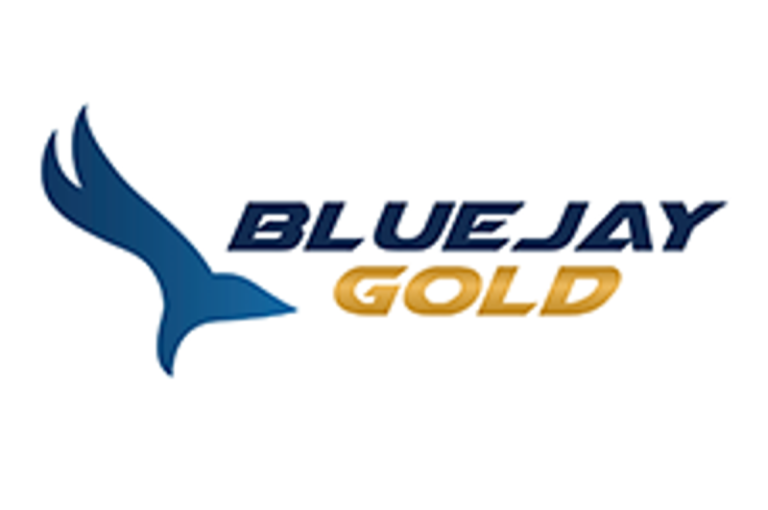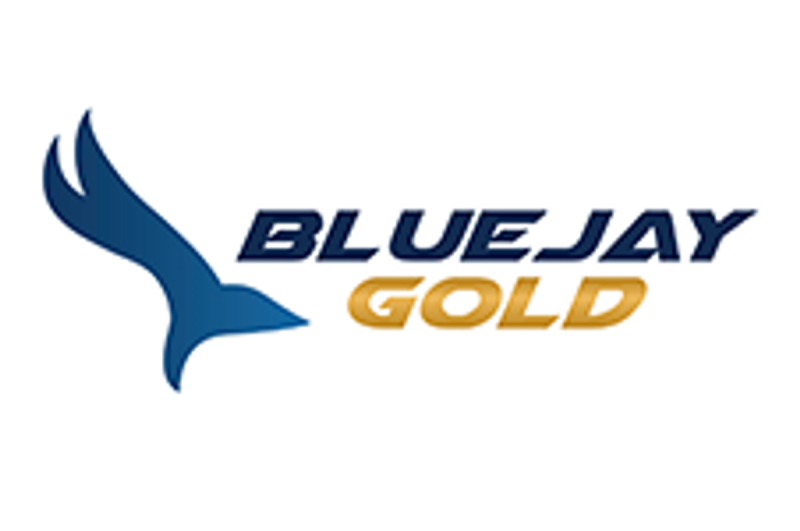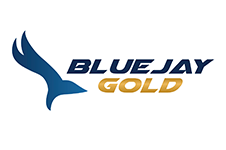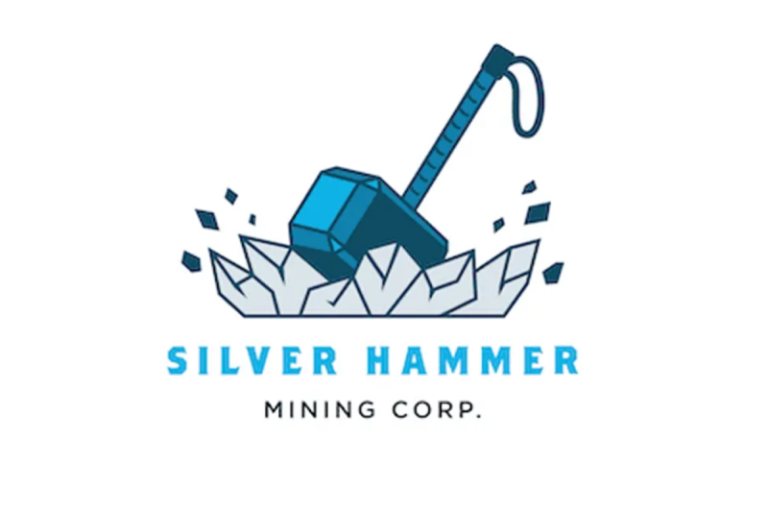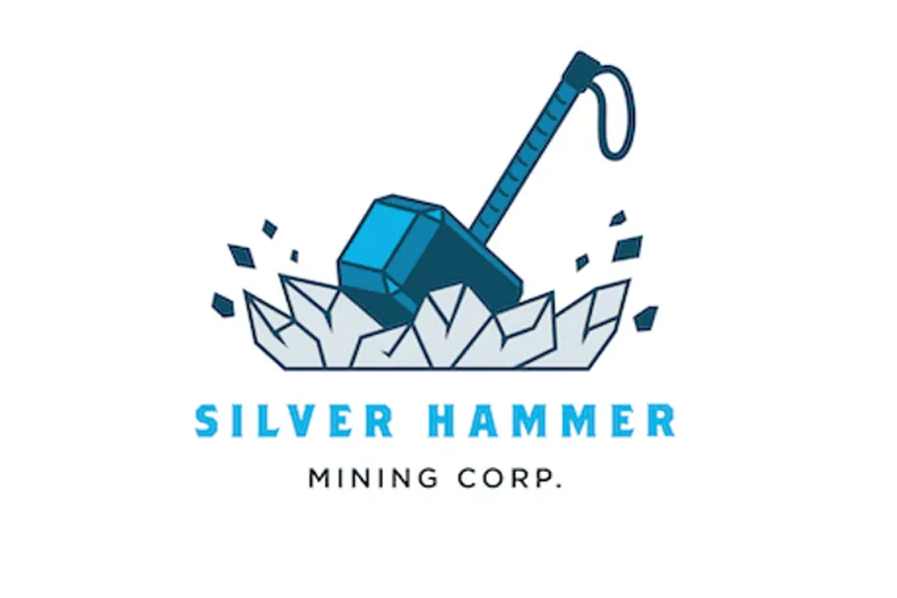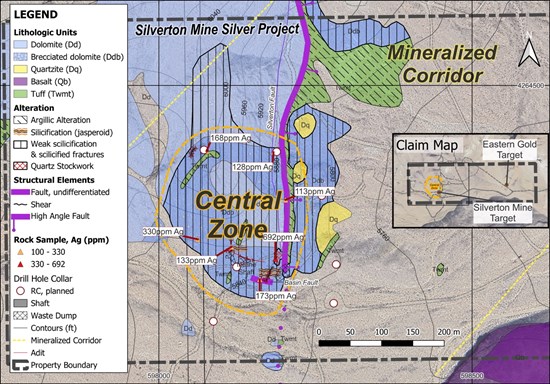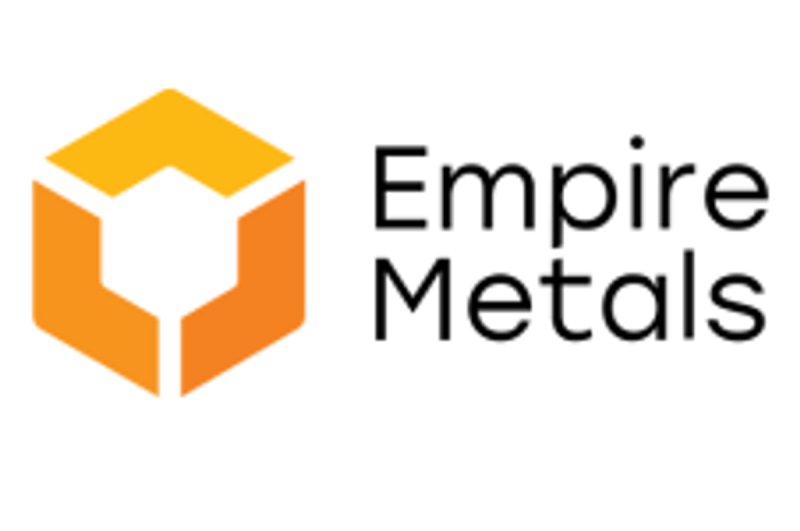
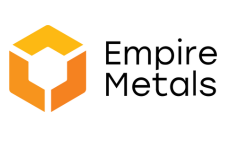
Empire Metals Limited – MRE Confirms World Dominant Titanium Discovery
Empire Metals Limited, the AIM-quoted and OTCQX-traded exploration and development company, is pleased to report a maiden Mineral Resource Estimate (‘MRE’) at its Pitfield Project in Western Australia (‘Pitfield’ or the ‘Project’). The MRE is reported in accordance with the Joint Ore Reserves Committee (‘JORC’) 2012 Code (The Australasian Code for Reporting of Exploration Results, Mineral Resources, and Ore Reserves) and includes both Indicated and Inferred categories.
Highlights
- One of the largest and highest-grade titanium resources reported globally1, totalling:
2.2 billion tonnes grading 5.1% TiO2 for 113 million tonnes of contained TiO2
- The MRE is reported only for Pitfield’s Thomas and Cosgrove deposits, and contains an in-situ Weathered Zone, inclusive of both the saprolite and weathered bedrock, of:
1.26 billion tonnes grading 5.2% TiO2 for 65.6 million tonnes of contained TiO2
- The MRE also includes a significant Indicated Resource category, predominantly at the Thomas deposit, of:
697 million tonnes grading 5.3% TiO2 for 37.2 million tonnes contained TiO2
- Multi-generational mine life: the Thomas and Cosgrove deposits that contain the MRE extend over 39km2 and 20km2 respectively, however they represent less than 20% of the known mineralised surface area. The underlying geophysical anomaly extends for kilometres below the extent of the current depth of drilling.
- High-grade, high-purity titanium mineralisation: occurs from surface, showing exceptional grade continuity along strike and down dip.
- Rapid Product Development Success: Conventional processing has already produced a high-purity product grading 99.25% TiO2 with negligible impurities, suitable for titanium sponge metal or pigment production.
- Friable, in-situ weathered zone: contains naturally forming TiO2 minerals, anatase and rutile, suitable for low-cost strip mining, with no overburden, no inter-burden, and no blasting required.
- Drilling at Thomas has defined a large, high-grade central core averaging circa 6% TiO2 across a continuous 3.6km strike length and over 2km width, expected to provide sufficient feedstock for over 30 years of initial mine life.
- Further resource expansion planned: additional drilling is expected to increase the size of the maiden MRE and upgrade portions of the resource into Measured and Indicated categories.
- Strategically located with access to global markets: Pitfield benefits from excellent logistics, with existing rail links to deep-water ports providing direct shipping access to Asia, USA, Europe and Saudi Arabia, ensuring secure and efficient delivery to global titanium and critical mineral markets.
1US Geological Survey, 2025 Summary Sheets, World Resources of Titanium Minerals.
Shaun Bunn, Managing Director, said:‘Pitfield is truly one of the natural geological wonders of the world: a district scale, giant titanium rich ore deposit which has remained hidden in plain sight until recently discovered by Empire. Credit goes to our talented exploration and technical team who have delivered one of the world’s largest titanium MRE, a metallurgical flowsheet and a saleable product, all within a remarkable short period of 30 months from our first drill hole.
‘The incredible success achieved to date has only spurred our team’s endeavours to untap the true potential of this phenomenal project and we remain focused on completing our processing optimisation testwork and moving rapidly into continuous piloting early next year. We have already commenced engineering, environmental and marketing studies which combined, will help confirm the commercial viability of Pitfield and form the basis for a Final Investment Decision.’
Pitfield Mineral Resource Statement (100% basis)
The Pitfield MRE incorporates the titanium mineralisation hosted within the interbedded succession of sandstones, siltstones and conglomerates as delineated through Diamond Core (‘DD’), Reverse Circulation (‘RC’) and Aircore (AC) drilling, that is supplemented with geophysical surveys, surface mapping and soil and rock chip sampling.
The Pitfield MRE is being reported in accordance with the 2012 JORC Code and estimated by a Competent Person as defined by the Code. The Pitfield MRE contains a high percentage of Indicated category, highlighting the confidence level of the resource within the maiden statement.
Notably, the MRE consists of two, distinct, high-grade, near-surface, in-situ weathered bedrock zones referred to as the Thomas and Cosgrove Deposits, which are defined by an area of 11.75km2 and 2.9km2 respectively (refer Figure 2). The MRE is within the larger Thomas and Cosgrove prospect areas of a combined area of 59km2.
The MRE has been subdivided to show the potential mineralisation at each prospect separately. It has been further subdivided to show the range of mineralisation within the in-situ saprolite zone and weathered bedrock zones, both being enriched in titanium dioxide minerals (anatase and rutile) and extending from surface to an average depth of approximately 30m to 50m (Table 1). Additionally, the MRE includes the uppermost portion of the underlying fresh bedrock mineralisation, which is primarily enriched with the titanium mineral titanite, as well as some rutile and titanium-iron oxides, and is completely open at depth.
Table 1 below summarises the MRE for Pitfield’s Thomas and Cosgrove deposits effective as of 13 October 2025 on a 100% basis. Empire owns 70% of Pitfield in a Joint Venture (JV) with Century Minerals Pty Ltd, which holds the remaining 30% JV interest. Empire is manager of the JV and the sole operator of the Project. Snowden Optiro was engaged to prepare a geological resource model for the MRE for Empire on the Pitfield Project. The MRE was reviewed and signed off in accordance with the JORC Code (2012) by Andrew Faragher (MAusIMM), Exploration Manager for Empire.
Notes:
The preceding statements of Mineral Resources conforms to the Australasian Code for Reporting of Exploration Results, Mineral Resources and Ore Reserves (JORC Code) 2012 Edition. All tonnages reported are dry metric tonnes. Minor discrepancies occur due to rounding to appropriate significant figures. The MRE is reported above a 2.5% TiO2 cut-off, constrained to aReasonable Prospects for Eventual Economic Extraction (RPEEE)pitshell.
About the Pitfield Project
Located within the Mid-West region of Western Australia, near the northern wheatbelt town of Three Springs, the Pitfield titanium project lies 313km north of Perth and 156km southeast of Geraldton, the Mid West region’s capital and major port. Western Australia is a Tier 1 mining jurisdiction, with mining-friendly policies, stable government, transparency, and advanced technology expertise. Pitfield has existing connections to port (both road & rail), HV power substations, and is nearby to natural gas pipelines as well as a green energy hydrogen fuel hub, which is under planning and development (refer Figure 1).
Thomas and Cosgrove MRE
The MRE has been completed on the Thomas and Cosgrove Deposits, which are located approximately 10km south-west and north-west of the town of Three Springs respectively. The Thomas Deposit has significantly more drill holes then the Cosgrove Deposit, due to the extensive drilling programme that was completed there in July 2025 (announced 8 July 2025). The greater drilling density at Thomas has resulted in a far larger MRE at Thomas than at Cosgrove, however further MRE grid drilling (AC/RC) is planned at Cosgrove over the next six months. Further infill MRE drilling at the Thomas Deposit (AC/RC) is scheduled for Q1/Q2 CY 2026 with drill holes to be drilled on existing cleared track lines within native vegetation areas under a standard clearance permit, while diamond drilling is scheduled in Q4 CY 2025 at Thomas focused on metallurgical and geotechnical work.
It is important to note that the maiden MRE presented herein is constrained by only the current number and density of drill holes and not currently by geology or extent of TiO2 mineralisation. Additional resource development drilling is planned that is fully anticipated to both enlarge this maiden MRE but also provide for more higher confidence category tonnages, including both Measured and Indicated categories. This maiden MRE provides, without constraint, the basis for the preliminary engineering and economic studies that are underway.
Geology and Mineralisation Style
Pitfield lies in a unique geological setting along the western boundary of the Yilgarn Craton, within the Yandanooka Basin which consists mainly of interbedded sandstones, siltstone and conglomerates. The Basin is situated between the Eurella Fault to the west and the Darling Range Fault to the east, and is interpreted to be approximately 9km deep. Crustal mapping by Geoscience Australia shows there are several deep crustal faults intersecting beneath the Yandanooka Basin and these faults are potentially the conduits of hydrothermal fluids that have strongly altered the host sediments and provided an upgrade to the titanium mineralisation.
The titanium mineralisation is associated predominantly with anatase and rutile in the weathered cap and titanite and rutile in the underlying fresh bedrock. Three distinct events have controlled the formation and nature of the titanium mineralisation. A Ti-rich magmatic intrusion was initially formed, uplifted and eroded into a shallow basin whereby titanium minerals were concentrated into beds as the sediments were sorted by a natural density-based segregation on a significantly larger extent than occurs in surficial mineral sand type deposits. A subsequent hydrothermal event and regional greenschist metamorphism then altered the host sediments and titanium minerals within the sediments and produced an alteration assemblage dominated by titanite (CaTiSiO5), hematite, epidote, carbonate and chlorite. The titanium mineralisation was further upgraded by intense weathering altering the titanite to anatase by removal of the calcium and silica. The consequence of this geological history has been the upgrading of TiO2 content in the ore mineralogy ultimately to >95% TiO2 in the anatase found in the weathered cap. Uniquely, nature has in fact done much of the processing for Empire at Pitfield.
The mineralisation is completely stratabound and the best mineralisation is found within the weathered cap whereby the sandstones, siltstone and conglomerates have been altered to saprolite, predominantly quartz and kaolin and the titanite has altered to anatase (TiO2). The weathered bedrock consists of altered rock, but weathering is less intense, quartz and kaolin are predominant but as the weathering profile turns to fresher material there is an increase in chlorite, epidote, mica, hematite and carbonate; the anatase content decreases and the titanite content increases.
The Pitfield MRE incorporates the Thomas and Cosgrove Deposits. Both Thomas and Cosgrove deposits (see Figures 2, 3 & 4) have near-surface, high-grade mineralisation that contains significant quantities of Indicated Mineral Resources. Thomas and Cosgrove both have large, high-grade central cores as per the Block Model. This in-situ weathered cap at Thomas alone would be sufficient to provide adequate feed for the first of several generational mine lives.
Drilling Techniques
Drilling was undertaken between 2023 and 2025 with all drilling managed entirely by Empire using contractors. RC holes were drilled at a diameter of 146mm, AC holes were drilled at a diameter of 90mm or 76mm. Diamond core holes were drilled using PQ3 (85mm,) HQ3 (61mm) or NQ2 (51mm) equipment. Drill core was oriented using the industry standard Reflex orientation tool.
Twin drilling was conducted between five drillhole pairs for a comparison of air core to both diamond and reverse circulation with little difference between the grade of the RC and AC twin drillholes.
Since commencing the maiden drilling campaign at Pitfield on 27 March 2023, Empire has completed 382 drill holes for a total 32,256 metres comprising:
- 17 DD drill holes for 2,704 m
- 140 RC drill holes for 18,764 m
- 225 AC drill holes for 10,797 m.
Sampling Techniques
Sampling at Thomas and Cosgrove utilised standard procedures employed across all drilling methods, with samples considered representative for the purposes of reporting.
- Air core (AC) samples were collected directly from an AC drill rig using a cone splitter at intervals every 2m downhole.
- Reverse circulation (RC) samples were collected directly from an RC drill rig using a cone splitter at intervals every 2m downhole.
- Diamond core samples were taken from the diamond core (HQ and NQ) that was sawn in half, with half going for assay and other half retained in core tray. Hole drilled with PQ, predominantly for metallurgical samples, were cut in half and then one half cut in quarter. The quarter was sent for assay and the remaining three quarters retained for metallurgical sampling. Samples were taken based on the geological logging of the drill holes.
Sample Preparation and Assay
Sample preparation for all AC, RC and DD samples was undertaken at Intertek Minerals laboratory in Maddington WA, where the samples received were sorted and dried. Primary preparation for diamond core samples was to crush each sample in its entirety to 3mm. AC and RC samples were primarily crushed to 3mm. Larger volume samples (>5kg) were split with a riffle splitter. All samples were pulverised via robotic pulveriser. Internal screen sizing QAQC is done at 90% passing 75um.
Prior to October 2024 a 4-acid digestion was used with ICP-MS finish (procedure 4A/MS48) as the initial assay technique. If the initial Ti values exceeded 2% Ti, the samples were re-assayed using a borate fusion digestion to ensure complete dissolution of Ti-bearing minerals, with a ICP-OES analytical finish (procedure FP1/OM).
In October 2024 the analytical methodology was modified to reduce the number of initial elements analysed to 33. The samples underwent a 4-acid digestion and were analysed by ICP-OES finish (procedure 4A/OE33). All samples with initial values exceeding 2% Ti were analysed again with an ICP-OES finish, but with a borate fusion digestion to ensure complete sample dissolution and total TiO2 mineral assaying.
Certified analytical standards were inserted with sample numbers ending in 00, 25, 50 and 75 within the numbering sequence for all AC, RC and DD samples.
Duplicates were inserted with sample numbers ending in 20, 40, 60 and 80 sample numbers within the numbering sequence for all AC and RC samples.
Bulk Density
A total of 42 bulk density values were collected from diamond drill core from both Thomas and Cosgrove; the samples came from the saprolite, weathered bedrock and fresh bedrock zones and were sent to Terra Petrophysics in O’Connor, Perth. The density determinations were made using conventional laboratory procedures. The buoyancy (specific gravity) method is used to determine bulk rock densities, after the samples are saturated with distilled water for 24 hours. Dry bulk densities are determined by dry weight divided by the buoyancy determined volume of each sample. Porosities are calculated from water saturated weights, dry weights, and the buoyancy-determined volume.
The accuracy of the buoyancy technique of density measurement is better than 0.1 grams per cubic centimetre. The results of the laboratory density determinations are reported in grams per cubic centimetre.
Estimation Methodology
Geological interpretation was completed using Leapfrog Geo (v 2025.2.1) software to construct a material type (cover, saprolite, weathered and fresh rock domains) model, which used a combination of geological logging and element geochemical data. A further geological model representing the principle lithological units was constructed using logging codes to represent the Yandanooka sandstone and interbedded conglomerate units present at both deposits. Mineralisation domains were defined using a lower modelling cut-off approximating a 2% TiO2 threshold, with a clear northwest-southeast trending boundary striking through both the Cosgrove and Thomas deposits.
Exploratory data analysis was then conducted by reviewing multi-element geochemical relationships for TiO2 with Al, Fe, Ca, Mg, K and Na in each of the forementioned domains. Estimation domains were defined based on weathering intensity and above and below the TiO2 modelling cut-off.
Drillholes were composited to 2m increments, representing the typical sampling interval used. Geostatistical analysis and grade continuity modelling was reviewed using Datamine’s Snowden Supervisor Software (v8.15.2) and estimation conducted using Datamine’s Studio RM Pro (v2.1.125.0).
The TiO2 grade was estimated using ordinary kriging, employing a three-pass estimation strategy within parent blocks measuring 50 m(X) by 50 m(Y) by 10 m(RL). Sub-blocking was permitted to 2m in all directions.
Variograms were modelled separately for each deposit using normal scores transformed data, which was back-transformed on export. At Thomas, the nugget effect was modelled at <20% of total variance, with the remaining three structures modelled at 155m (0.31), 285m (0.11), and 535m (0.41). The variogram is aligned 000->345 for the major direction, 00->255 for the semi-major and 90->000 for the minor (vertical). Cosgrove has less data outside of the closely spaced drill area. At Cosgrove, the nugget effect accounted for approximately 25% of variance of the data. The remaining two structures were modelled at 125m (0.316) and 375m (0.435). The orientations were like Thomas, however favoured a slight rotation of the major to 00->340 was used, with 00->070 for the semi-major and 90->00 for the minor.
Density was assigned to the parent blocks based on bulk densities determined form the Archimedes water immersion method, conducted at Terra Resources. A total of 40 samples from both deposits were submitted across all weathering types. Density were assigned to the block model on the basis of material type, as per Table 3 below.
Due to the size of the deposits, any un-estimated blocks were hard-coded and were flagged in the model by way of an indicator variable and excluded from classified Mineral Resources.
Cut-off grade(s) and basis of selection
A cut-off grade of 2.5% TiO2 was used and determined from optimisation studies which indicated a break-even cut-off of 2.36% TiO2. Grade and tonnes have been reported within a constrained pit shell reported from a Whittle optimisation. The underlying parameters are listed in Table 4.
This decision was based on a high-level preliminary evaluation of potential modifying factors.
NB* Calculation derived from Total ore cost / (Process recovery*(Price*(1-Royalty)-Product Transport))*100
See JORC Table 1 Section 2 for more detailed explanation.
Future Drilling to Support MRE Upgrade in 2026
The MRE model is currently being reviewed to ensure future drilling supports an MRE upgrade in mid CY 2026, focused on conversion of some Indicated Resources to Measured at Thomas and Cosgrove deposits. This MRE upgrade would further assist with mine development planning, as well as growth in the overall resource from a substantial Cosgrove MRE grid drilling and Thomas infill drilling programmes, further bulk density work to increase density figure used and ongoing metallurgical test work focused on determining a final process flow sheet and end product specifications.
The Mineral Resource Estimate for Cosgrove is estimated based on the limited drilling completed to date, with no MRE grid drilling completed on a large scale.
The Company has lodged a Programme of Works with the WA government’s Department of Mining, Petroleum and Exploration to support an extensive grid drill out of the Cosgrove Deposit over the next six months. The grid drilling will be designed primarily based on the Thomas MRE grid drilling, being AC drilling on a 400m by 200m lines over a 2km by 5km area and infill RC drilling.
The Company plans to use this planned drilling as a basis to upgrade and expand the Cosgrove MRE.
Further drilling at the Thomas Deposit is being reviewed on the basis of increasing confidence in the weathered zone to support future scoping studies. The Company will base any future drilling at the Thomas Deposit on the ability to increase the confidence of the resource, i.e. targeting a Measured Classification Resource, as well as to increase the size of the resource by additional grid drilling, both internally within the resource (i.e. in areas that have not yet been infill drilled) and also outside the extent of the resource. The focus on Thomas will be the existing high grade core of the resource which sits withing the existing Thomas MRE.
Classification
The MRE has been classified following the guidelines of the Australasian Code for Reporting of Exploration Results, Mineral Resources and Ore Reserves, 2012 (the JORC Code). The MRE has been classified as Inferred and Indicated on the basis of confidence in geological and grade continuity, the quality of the sampling and assay data, and confidence in the estimation of titanium across the deposit. This is based on the robustness of the grade estimate as determined from the drillhole spacing, geological confidence and grade continuity.
Mineralogy and Metallurgical Factors or Assumptions
The main titanium minerals at Pitfield are anatase (TiO2) within the saprolite and weathered bedrock and titanite (CaTiSiO5) within the fresh bedrock, rutile (TiO2) is found within all rock types. The minerals have been identified from thin section petrography, SEM and microprobe work. The microprobe work has identified that there are no deleterious elements within the anatase, rutile or titanite.
Metallurgical testwork has been undertaken on a range of samples from the exploration programme. The focus of the testwork has been on the weathered zones, as this is near-surface and extensive. There has been some limited testwork in the underlying fresh bedrock zone and this will continue in subsequent testwork programmes as the flowsheet details start to be confirmed. It is likely that only small modification to the process flowsheet would be required in order to treat the fresh bedrock ore, this assumption will be tested as the project progresses.
Multiple samples from DD core drilling and AC drilling programmes have been selected for metallurgical testwork. Testwork is being managed by Empire’s technical team and being undertaken at a number of commercial laboratories in Perth, Western Australia. The programme has three key areas:
- Understanding the mineralogy and physical characteristics of the mineralisation that influence metallurgical performance
- Mineral separation process development
- Elemental extraction process development
Progress results have been reported previously via RNS, including most recently:
- ‘Breakthrough in Process development’ (28/08/25)
- ‘Exceptional High-Purity TiO2 Product Achieved’ (09/06/25)
- ‘Significant Progress Achieved on Process Flowsheet’ (13/02/25)
Competent Person Statement
The technical information in this report that relates to the Pitfield Project has been compiled by Mr Andrew Faragher, an employee of Empire Metals Australia Pty Ltd, a wholly owned subsidiary of Empire. Mr Faragher is a Member of the Australian Institute of Mining and Metallurgy (AusIMM). Mr Faragher has sufficient experience that is relevant to the style of mineralisation and type of deposit under consideration and to the activity being undertaken to qualify as a Competent Person as defined in the 2012 Edition of the ‘Australasian Code for Reporting of Exploration Results, Mineral Resources and Ore Reserves’. Mr Faragher consents to the inclusion in this release of the matters based on his information in the form and context in which it appears.
The scientific and technical information in this report that relates to process metallurgy is based on information reviewed by Ms Narelle Marriott, an employee of Empire Metals Australia Pty Ltd, a wholly owned subsidiary of Empire. Ms Marriott is a member of the AusIMM and has sufficient experience relevant to the style of mineralisation and type of deposit under consideration and to the activity being undertaken to qualify as a Competent Person as defined in the JORC Code 2012. Ms. Marriott consents to the inclusion in this announcement of the matters based on their information in the form and context in which it appears.
Market Abuse Regulation (MAR) Disclosure
Certain information contained in this announcement would have been deemed inside information for the purposes of Article 7 of Regulation (EU) No 596/2014, as incorporated into UK law by the European Union (Withdrawal) Act 2018, until the release of this announcement.
**ENDS**
For further information please visit www.empiremetals.co.uk or contact:
About Empire Metals Limited
Empire Metals Ltd (AIM:EEE)(OTCQX:EPMLF) is an exploration and resource development company focused on the rapid commercialisation of the Pitfield Titanium Project, located in Western Australia. The titanium discovery at Pitfield is of unprecedented scale, and hosts one of the largest and highest-grade titanium resources reported globally, with a Mineral Resource Estimate (MRE) totalling 2.2 billion tonnes grading 5.1% TiO₂ for 113 million tonnes of contained TiO₂.
The MRE, which covers only the Thomas and Cosgrove deposits, includes a weathered zone resource of 1.26 billion tonnes at 5.2% TiO₂ and a significant Indicated Resource of 697 million tonnes at 5.3% TiO₂, predominantly from the Thomas deposit. Titanium mineralisation at Pitfield occurs from surface and displays exceptional grade continuity along strike and down dip. The MRE extends across just 20% of the known mineralised footprint, providing substantial potential for further resource expansion.
Conventional processing has already produced a high-purity product grading 99.25% TiO₂, suitable for titanium sponge metal or pigment feedstock. The friable, in-situ weathered zone supports low-cost, strip mining without the need for blasting or overburden removal.
With excellent logistics and established infrastructure, including rail links to deep-water ports with direct access to Asia, the USA, Europe and Saudi Arabia, Pitfield is strategically positioned to supply the growing global demand for titanium and other critical minerals.
Empire is now accelerating the economic development of Pitfield, with a vision to produce a high-value titanium metal and/or pigment quality product at Pitfield, to realise the full value potential of this exceptional deposit.
The Company also has two further exploration projects in Australia; the Eclipse Project and the Walton Project in Western Australia, in addition to three precious metals projects located in a historically high-grade gold producing region of Austria.
Source
Click here to connect with Empire Metals Limited (LON:EEE)(OTCQX:EPMLF), to receive an Investor Presentation
This post appeared first on investingnews.com




